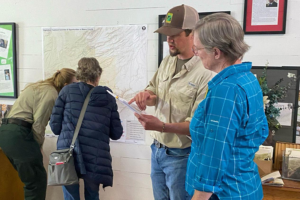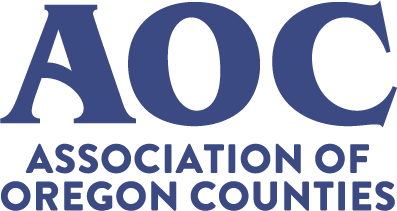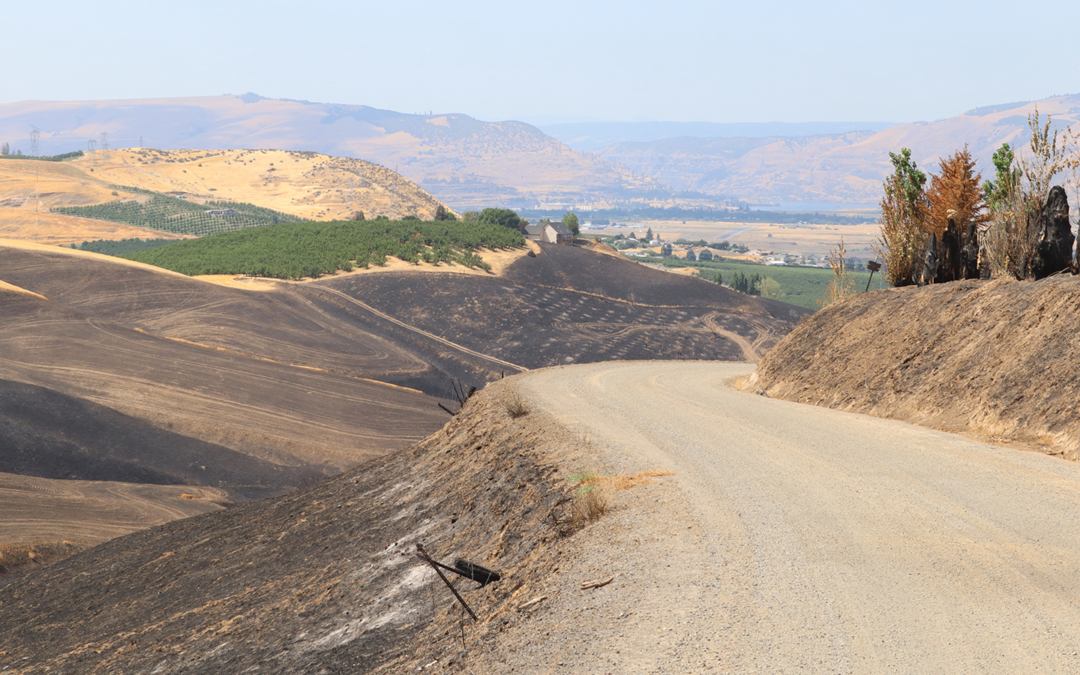(The Sunset Valley Fire burned agricultural fields south of The Dalles in July 2021. Photo by Jacob Powell)
Sponsored content contributed by AOC Business Partner: OSU Extension Service
Wasco County has been designated as “very high risk” for wildfire, making it a higher risk than 95-100% of other communities in the United States.
Because of this, Kayla Bordelon, the Oregon State University Extension Service regional fire specialist for the Willamette Valley and north Cascades, made Wasco a top priority.
And that is not just talk: Bordelon and other local and regional collaborators have been awarded a nearly $6 million grant for the county through the federal Bipartisan Infrastructure Law, which designated a $1.5 billion investment into wildland firefighting and wildfire resilience.
“Building this funding proposal was definitely a labor of love for the handful of us on the grant writing team,” said Bordelon.
Bordelon is a member of OSU Extension’s Fire Program, created in 2019 to support community and landscape wildfire resiliency across Oregon. She joined the team in 2022 after completing a Ph.D. in environmental science with a focus on fire education from University of Idaho.
A substantial component of the grant funding will create and fund a full-time, countywide wildfire coordinator position with Wasco County. “One of my long-term goals is to build local capacity to coordinate wildfire resilience efforts in the nine counties I serve,” said Bordelon. “My number one priority for this grant was funding this county coordinator position. Investing in people allows us to do more work together.”
The rest of the funding will be spread among several sub-awardees including Wasco County Planning Department, the Oregon Department of Forestry, and OSU Extension and includes projects such as creating defensible space around homes to clearing roadside vegetation that is susceptible to sparking or carrying wildfire.
OSU Extension will lead a project to complete a fuels and forest health assessment of 80,000 acres of private, non-industrial forestland in the county. (Fuel is any material that burns in a fire. In the forest, fuel is vegetation such as grasses, shrubs and trees.)
In this assessment, Bordelon said they will be asking questions like: “What species composition is here? Is it healthy? Is it over-stocked with fuels? Do we have a lot of dead and down fuels on the ground?” This information will help identify areas that need restoration and management. “We can look across this whole landscape and say: Wow, we have this many acres of forestland that are high priority for restoration,” she said.
Since this level of detail is not common for private land “it gives landowners more personalized information about management options while also providing county wildfire practitioners with a widespread picture of forest conditions,” Bordelon said.
With that knowledge, county partners are better prepared to ask for state and federal funding. “We will have a really good sense of exactly what needs to be done and where,” said Bordelon. “That makes us more competitive for federal and state dollars.”
Welcoming community
On her first trip to southern Wasco County, Bordelon described how enthusiastic and welcoming the community was. “I went to the town of Wamic, super small town, population 52 to support a community meeting and gather community input on fire resiliency priorities,” Bordelon said. “I showed up hours before the meeting because I wanted to be prepared and didn’t know what to expect.”
When she walked inside, she found “a dozen or more people in The Grange kitchen making lunch for a huge crowd.”
“Community members wanted to be helpful,” she said. The turnout for the meeting ended up being over 100 — doubling the town’s population. “I was very heartened by the engagement.”
Looking forward, Bordelon is working to get similar grants for the other counties she serves. Because of its high-risk status, Wasco County was “an obvious place to start for me, but Wasco is also just the beginning,” she said.
Bordelon’s goal is to help strengthen the counties she works with, so they are best prepared for wildfire before it happens. “In many rural areas, fire departments and wildfire agencies are understaffed or are run by volunteers” she said. “They don’t always have the capacity to write and manage federal grants. By building a coalition and doing it together, we help everyone out.”
See more stories from OSU Extension: https://extension.oregonstate.edu/impact
Contributed by: Henry Carnell | OSU Extension Communications Specialist

Residents attend wildfire input meeting in Wamic in 2023. (Photo by Kayla Bordelon)

